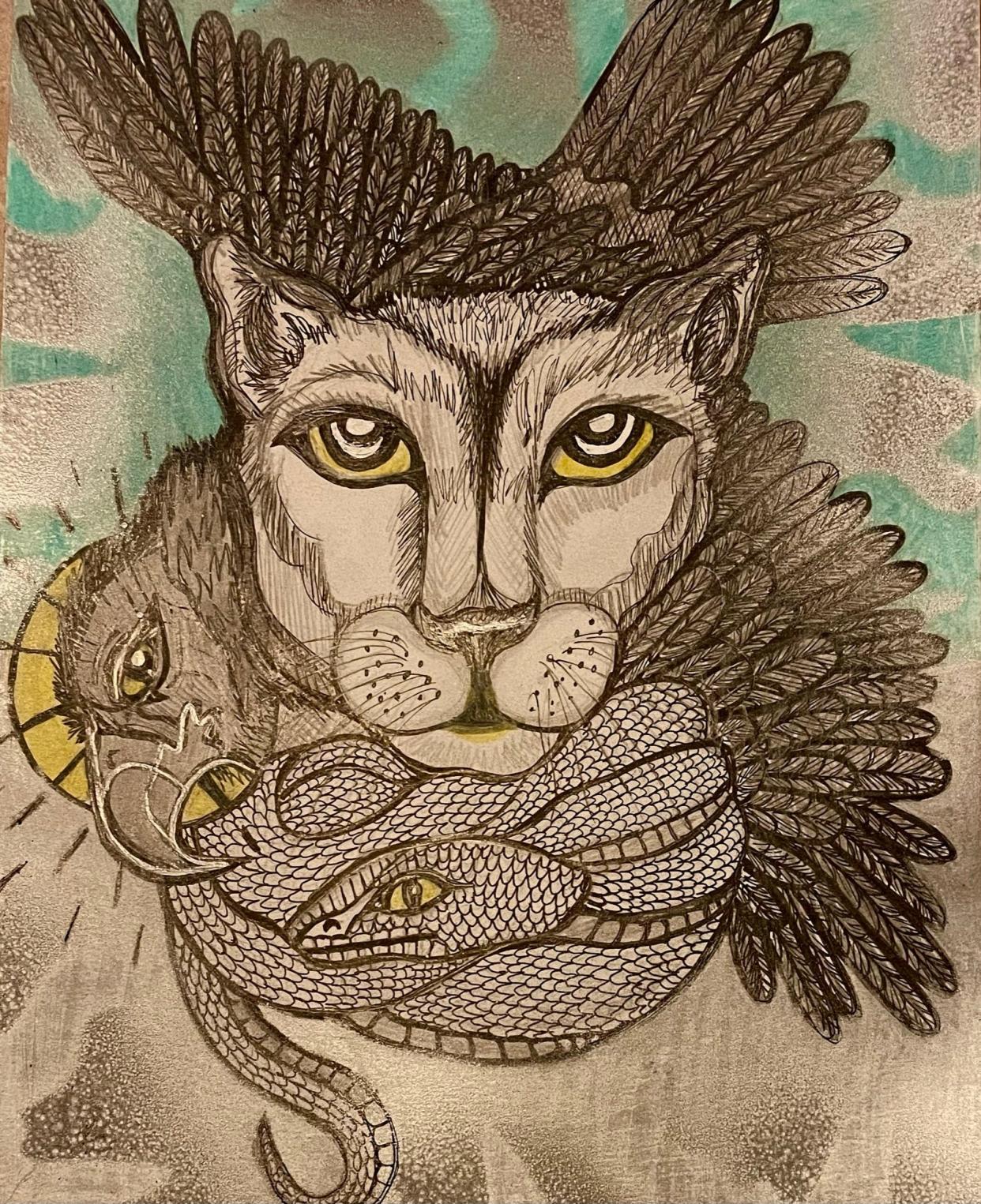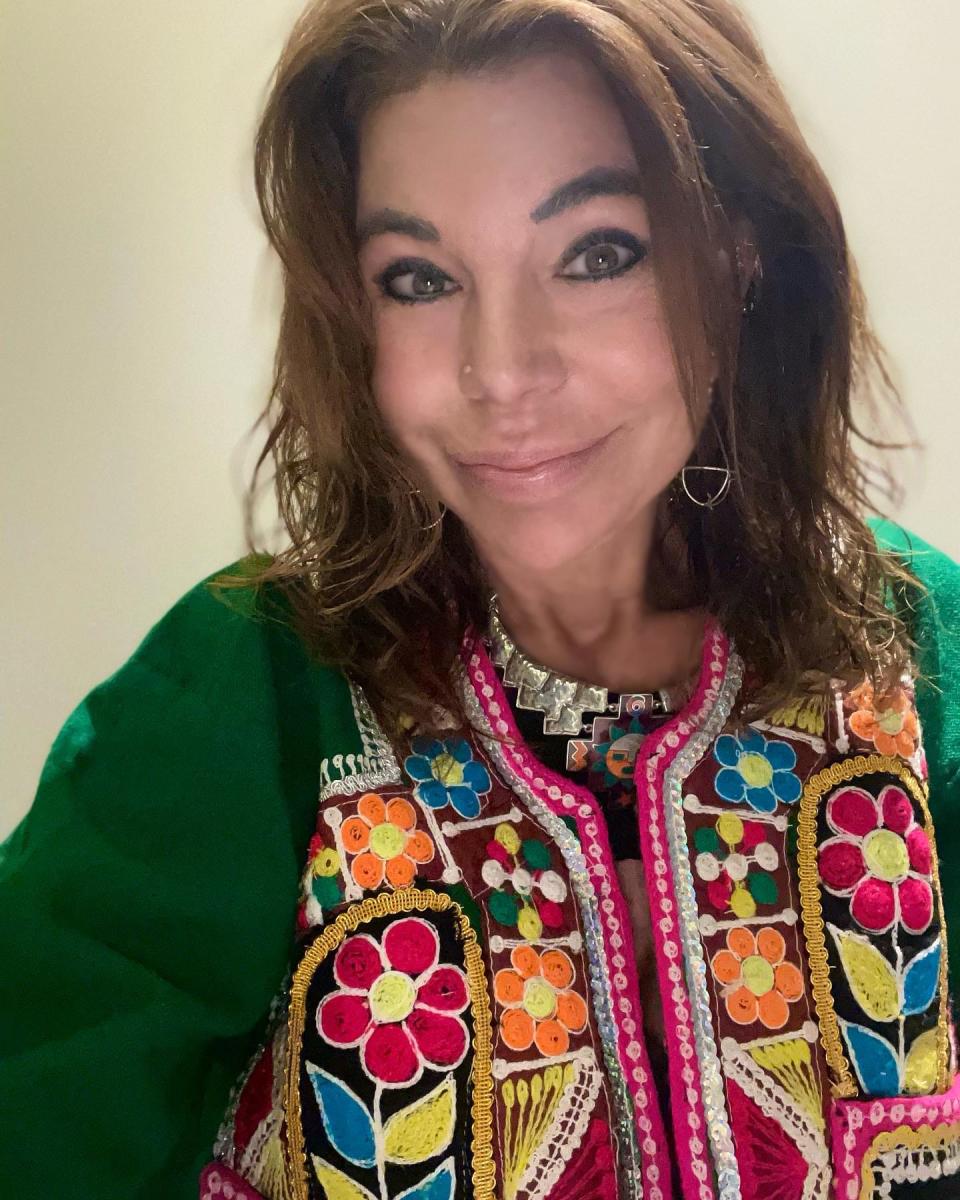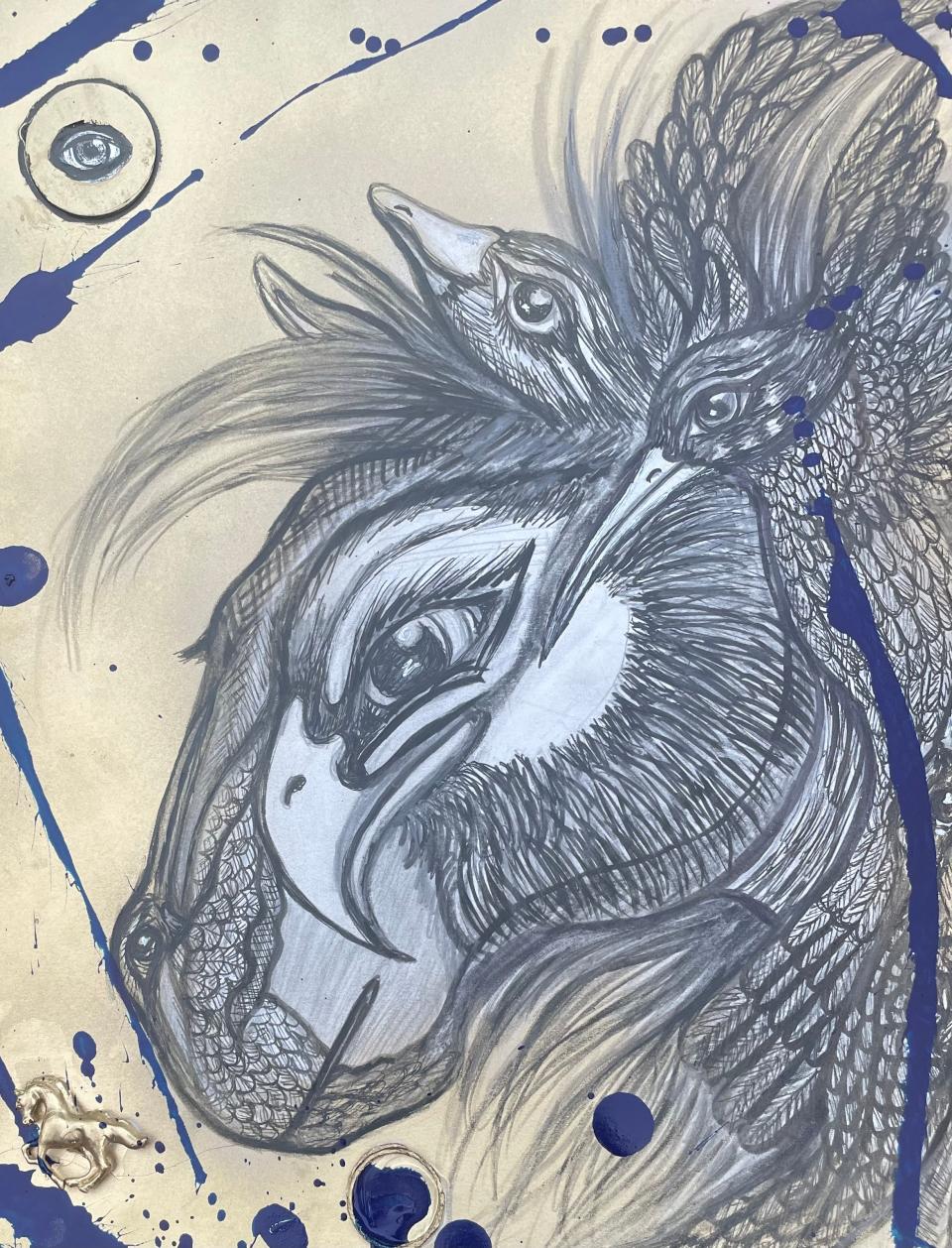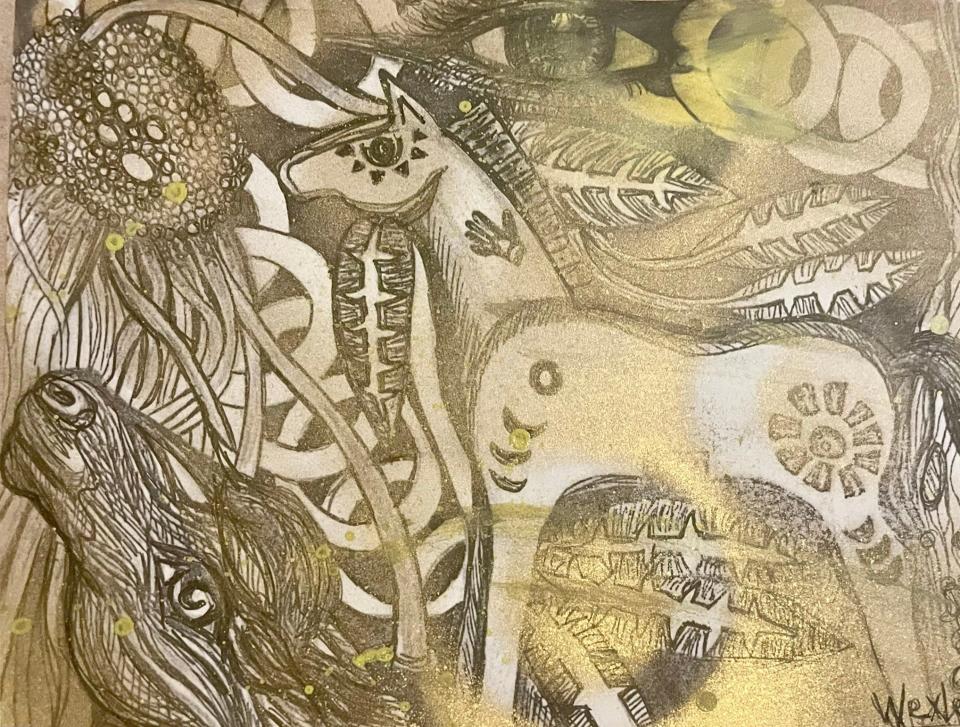Portrait of an archetypal artist: A Q&A with Anita Wexler

Anita Wexler is the very definition of a prolific artist. (I wouldn’t be surprised if her picture is next to the word “prolific” in the dictionary.) She paints and draws every day, and has the portfolio to prove it.
She began this practice in childhood and never stopped. Wexler refined her talent at the Parsons School of Design in New York City. Philippe Valy and other mentors helped her art evolve.
What emerged is a visual language she calls “Primitive Pop.” Bold colors, swirling forms, arcane symbols, and striking, sensual images of male and female figures, birds and beasts.
Arts Newsletter: Sign up to receive the latest news on the Sarasota area arts scene every Monday
Jesse Clark exhibit: Ringling College student’s photos illuminate Black male identity at Art Center Sarasota
Anne-Marie Russell: Former Sarasota Art Museum director takes new post in St. Petersburg
These archetypal entities reflect Wexler’s inner dream world – the imaginative life behind her eyes, not the harsh, objective reality outside.
As a working artist and illustrator, Wexler constantly records her dreams in paintings, illustrations, mixed media drawings and assemblage sculpture. But she also makes a difference in the real world, too. Wexler describes herself as “a mother of three amazing children.” She also passes on the secrets of her artistry to eager students at Sarasota High School. Here are a few of the secrets she shared with us.

How did you get started as an artist? Did your family help?
Not really, but they didn’t get in the way. (laughs) My family really wasn’t into art. As a child, I kept pleading for ballet lessons, but they were too expensive. When I asked for piano lessons, my mother told me, “We don’t have a piano!” But pencils and paper were always around at our house. So I just started drawing and doodling. Seeing my art on paper really felt like “Wow!” When my art teacher saw I was drawing on notebook paper, she gave me some unlined drawing paper to take home. That really changed everything!
How does your artistic life inform your work as an arts teacher?
For me, my work in the classroom closes the circle on my artistic life. High school is an important crossroads for young talent. It’s the time you find yourself, and discover the path you want to take in life. My art teacher and counselor gave me a lot of support when I was in high school. Teaching art today is my way of paying it forward to a new generation of students.
The Ringling’s David: Statue is 100-plus years old. How does the museum keep it forever young?
Madeleine George: ‘Only Murders in the Building’ writer wins $35,000 Hermitage Major playwriting commission

Please tell us about some of the artists and cultures that inspire you.
I’d have to start with my mentor, Philippe Valy. I’ve also been influenced by the old masters, and new masters as well! A short list would include Hieronymus Bosch, Max Ernst, Frida Kahlo, and Dorothea Tanning. My cultural inspirations include my Native American roots and my experiences of other peoples around the world. That’s why I’m constantly exploring. To get somewhere, you need to keep traveling. I think that’s true both creatively and literally.
Would you say your artistic journeys reflect your explorations in the real world?
Yes – and I really think there’s no separation between my inner and outer explorations. When I travel to other countries and cultures, it’s really a journey of enlightenment. I immerse myself in the spiritual traditions of each place, and try to find the common thread between different belief systems. I try to tap into that universal connection, and let it flow in my own art.
Your latest series at Selby Library is the most recent example.
Yes, it’s sort of an artistic diary of my trip to South America this summer.

Where’d you go?
I went to ... Argentina, Brazil, Chile, Ecuador and Peru. Each destination was life-changing — Peru, especially. I’ve always been drawn to Peru for some reason. It’s a beautiful mix of Hispanic and indigenous cultures. The cultures of the Inca, Quechua and other peoples haven’t been completely wiped out and homogenized. You still feel a sense of authenticity and innocence — the amazing colors are real, not just a show for tourists. I made sure to bring back textiles and pieces to share in the classroom. And I did my best to share my amazing experiences in my art in this series.
What’s your advice to anyone on an artistic path?
Art is a journey, not a destination. You’re always traveling, but you never arrive. I experiment and grow daily in my own artwork. If you never feel satisfied and always want to take it a little further? Be happy. That’s a good sign you truly are an artist!
‘Anita Wexler: South American Drawings and Paintings’
On display through Sept. 30, at Selby Public Library, 1331 First Street, Sarasota. 941-861-1100.
Read more visual arts stories by Marty Fugate.
This article originally appeared on Sarasota Herald-Tribune: Selby Library showcases Sarasota artist Anita Wexler's exhibit

